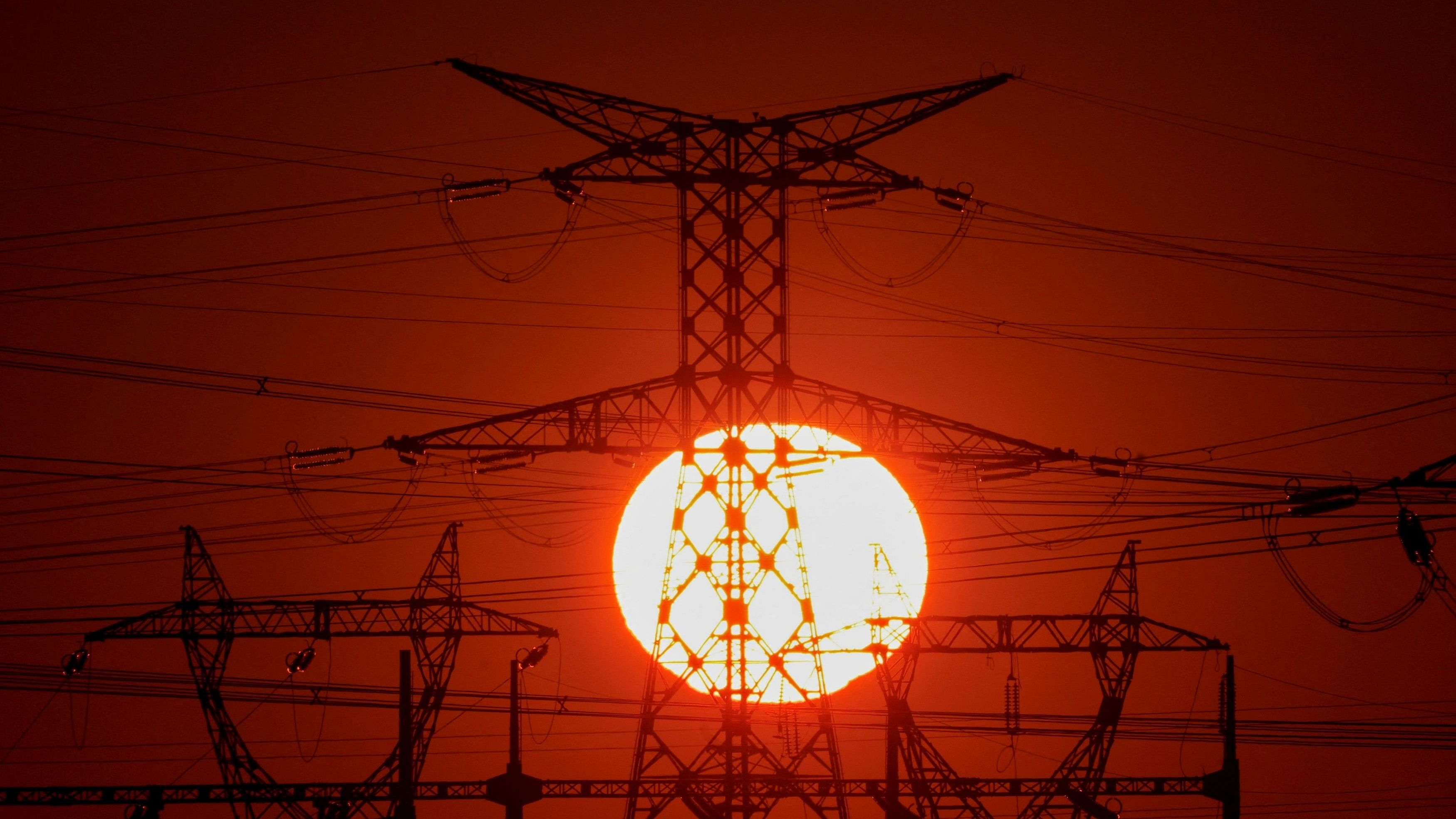
Electrical power lines.
Credit: Reuters Photo
On August 25, 2023, Karnataka clocked the highest-ever peak demand for energy at 16,950 MW. This unusual surge (the state normally experiences peak demand in the summer months) was driven by factors such as escalated energy consumption due to the provision of free power up to 200 units/month to domestic consumers, poor rainfall leading to increased energy consumption by farmers, and heightened commercial and industrial activities within the state.
With this rise in energy requirements, there is increased pressure on the state’s generation sector, especially the thermal power sector. Consequently, the plant load factors (PLFs) of coal-fired power plants have escalated. This, in turn, has led to an uptick in carbon emissions.
Between April and August 2023, the peak demand in Karnataka was approximately 15 per cent higher than that over the same period in 2022. To address this increased demand, it is imperative to strategize expansion plans for power generation. Such plans should align with the state’s renewable purchase obligations (RPOs) and energy storage obligations (EPOs). These targets are in place to promote green energy and achieve net-zero emissions.
The Ministry of Power (MoP) recently notified guidelines for a tariff-based competitive bidding process to boost and facilitate the addition of renewable energy (RE) capacity. This initiative aims at long-term (20–25-year) power purchases from firm and dispatchable RE sources integrated with energy storage systems. This will enable distribution companies (Discoms) to procure power on a demand-following basis and achieve their RPO and EPO targets. As energy demand surges, Discoms are compelled to deviate from their approved energy purchase plans, leading to purchases at a high per-unit cost through short-term power exchange arrangements. The MoP’s initiative helps Discoms access the benefits of a consistent, predictable, cost-effective, and clean source of power. Further, the significance of firm and dispatchable RE sources is gradually increasing among other utilities in the country, as these are seen as a means to mitigate deficits through uninterrupted supply. For instance, in July 2023, the Solar Energy Corporation of India (SECI) initiated a Request for Selection (RfS) process for choosing RE power developers to supply 500 MW of firm and dispatchable RE power for Punjab State Power Corporation Limited. This is a major development in the context of rising power demand in Punjab.
Coming back to Karnataka, its installed capacity, including the allocated share, stood at 24,492 MW in August 2023. As per our analysis based on the current demand trend, peak demand could surge to approximately 20,295 MW by 2025 and 29,166 MW by 2032. Moreover, our comprehensive analysis of the demand and supply balance for 8,760 hours in 2025 anticipates the available dispatchable power at peak instant to be 11,377 MW, indicating a peak power deficit of approximately 8,900 MW.
To cater to such deficits, a state can build its own capacity, secure allocations from upcoming central generating stations (CGSs), and procure power from independent power producers (IPPs). Given the absence of planned power projects in Karnataka, the state requires an allocation of additional 1,500-MW and 1,000-MW capacity from upcoming CGSs (hydro/thermal/nuclear sources) and RE-based (solar and wind) IPPs, respectively. However, there will still be a deficit of approximately 1,500–2,000 MW during critical periods, which needs to be sourced through firm and dispatchable RE. Our analysis indicates an additional firm power capacity requirement of 3,000–3,500 MW in 2025. The firm and dispatchable RE initiative could significantly benefit Karnataka by addressing up to 40% of its deficit during peak demand. Further, to meet the state’s anticipated peak demand by 2032 without additional thermal and hydroelectric plants, the focus will be on incorporating RE sources. However, to mitigate the challenges associated with the intermittent and variable nature of solar and wind plants, it is advisable to expedite the commissioning of two pumped storage plants (Sharavathi and Varahi basins with a capacity of 2,000 MW and 1,500 MW, respectively) for curbing the demand-supply deficit.
For an efficient transition towards green energy and meeting the increased demand in Karnataka, Discoms can benefit from implementing a supply procurement strategy aligned with the demand curve. Exploring potential suppliers and planning phased procurement are recommended. Although securing such capacity quickly is challenging, it is advisable for the state to simultaneously explore and develop storage systems.
(The writers work in the area of energy and power at CSTEP)